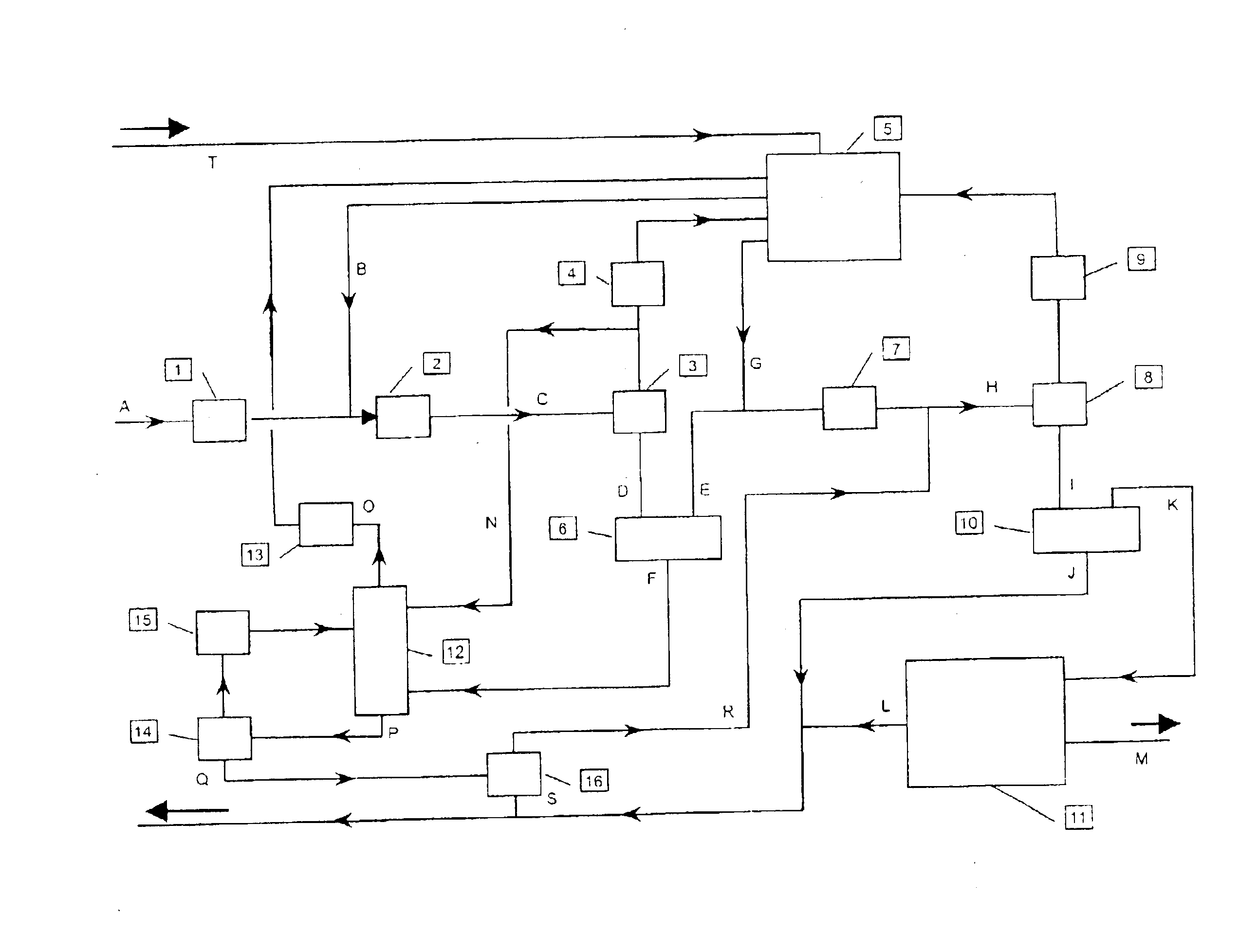Process for producing alkyl esters from a vegetable or animal oil and an aliphatic monoalcohol
a technology of vegetable or animal oil and aliphatic monoalcohol, which is applied in the direction of fatty oil/acid recovery from waste, fatty acid chemical modification, fatty oil/fat refining, etc., can solve the problems of achieve the effect of high purity glycerin and substantial impact on process costs
- Summary
- Abstract
- Description
- Claims
- Application Information
AI Technical Summary
Benefits of technology
Problems solved by technology
Method used
Image
Examples
example
The oil used was a rapeseed oil and the methanol was commercial grade A methanol.
In the first reactor, the conversion is defined as the quantity of oil that has reacted, i.e. the oil completely converted to the methyl ester (total quantity of oil less the quantity of monoglycerides, diglycerides and triglycerides) over the total quantity of oil, i.e.: [50−(1.8+1.0+0.6)] / 50=93.2%. The amount of water in the first reactor was 1000 ppm.
In the second reactor, the conversion is related to the quantity of oil entering the first reactor by taking into account the monoglycerides and diglycerides that have reacted in the second reactor. The conversion is then: [50−(0.3+0.1+0)] / 50=99.2%. The amount of water in the second reactor was 1200 ppm.
For the two reaction steps, the operating conditions were identical. The weight ratio of methanol to oil was 50 / 50 in the first reactor and the weight ratio of methanol to methyl ester was 48 / 49.6 in the second reactor.
The temperature was 473K. The pressu...
PUM
| Property | Measurement | Unit |
|---|---|---|
| temperature | aaaaa | aaaaa |
| temperature | aaaaa | aaaaa |
| temperature | aaaaa | aaaaa |
Abstract
Description
Claims
Application Information
 Login to View More
Login to View More - R&D
- Intellectual Property
- Life Sciences
- Materials
- Tech Scout
- Unparalleled Data Quality
- Higher Quality Content
- 60% Fewer Hallucinations
Browse by: Latest US Patents, China's latest patents, Technical Efficacy Thesaurus, Application Domain, Technology Topic, Popular Technical Reports.
© 2025 PatSnap. All rights reserved.Legal|Privacy policy|Modern Slavery Act Transparency Statement|Sitemap|About US| Contact US: help@patsnap.com


